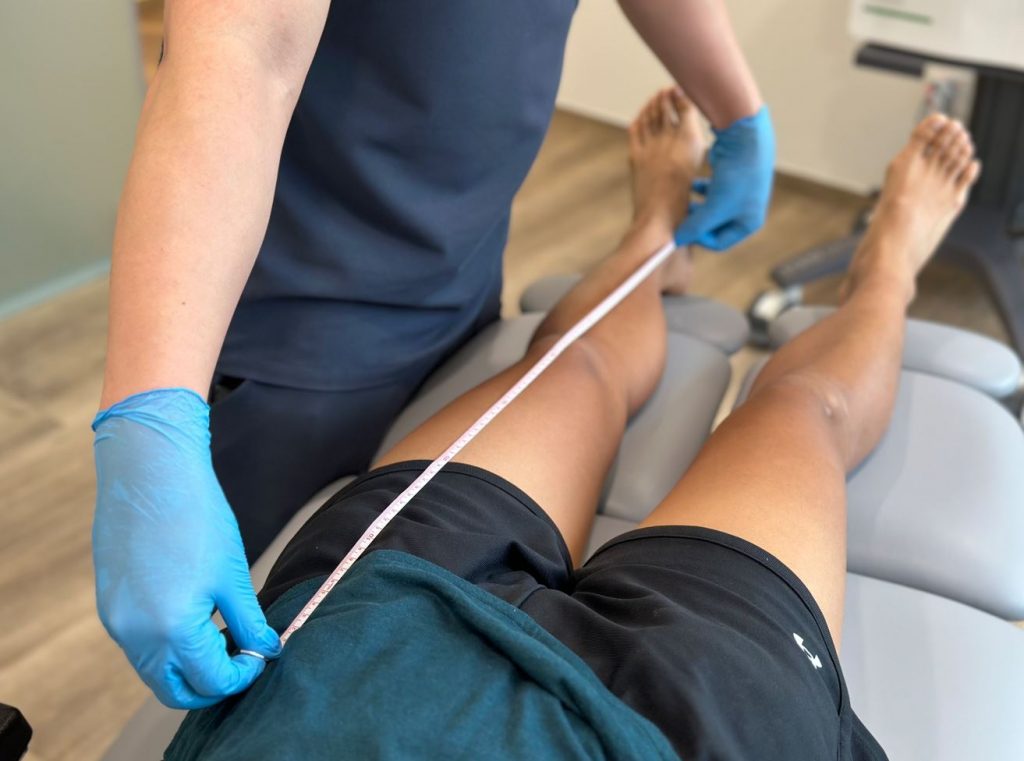What is Foot Drop?
What Causes a Foot Drop?
Foot drop is primarily caused by injury to the motor nerves supplying our lower leg. Injury to the motor nerves can occur due to compression, trauma, infections (e.g poliomyelitis), genetic disorders (e.g Charcot-Marie-Tooth disease) or other health condition (e.g stroke).
Compression or entrapment of motor nerves occurs either from the direct pressure of nerves (e.g common fibular nerve injury), or by other body structures (e.g slipped discs). Traumatic injuries to the nerves commonly occur during surgery of the lower limb, fractures of the lower limb, or spine injury from a fall.

Need Help? See Our Podiatrist Today
What are the Signs and symptoms of Foot Drop?
Signs and symptoms include:
- Unable to lift the foot up against gravity
- Frequent tripping over the affected foot
- Dragging the foot when walking
- Needing to raise knee higher to walk
- Foot “slapping” the ground when walking
Below are the typical ways that the body compensates when walking with a foot drop:
- Increased flexion of the hip and knee
- Lifting of the hip (hip hiking) of the affected limb
- Circumduction of the affected limb (side swinging of the leg)
- Increased sidewards swaying of the body

Signs and Symptoms Of Leg Length Discrepancy
Most mild cases of leg length discrepancy are asymptomatic as the body is able to compensate for the difference, which are signs that are typically noticeable.
Signs of leg length discrepancy include:
- Pronation (rolling inwards) or supination (rolling out) of one foot
- Abduction (angle outwards) of one foot
- Tip-toeing on one foot
- Flexion (bend forward) or hyperextension (bend backwards) of one knee
- Hip tilt
- Shoulder tilt
Conditions Associated with Leg Length Discrepancy
Conditions that are associated with leg length discrepancy usually affect only one lower limb, and they include:
- Corns and calluses
- Bunion
- Flat Feet
- Plantar fasciitis
- Posterior tibial tendon dysfunction
- Achilles tendonitis
- Runner’s knee
- Piriformis syndrome
- Sciatica or lower back pain
Leg Length Discrepancy Treatment in Singapore
Management for leg length discrepancy usually involves using devices to help reduce the length differences. It is also essential that the individual undergo a stretching and strengthening program to reduce the compensation and adaptation he/she developed over time.
Treatment options for leg length discrepancy in Singapore include:
- Shoe lifts
- Footwear modifications
- Customised foot orthoses
- Stretching and strengthening program
- Deep tissue release using radial pressure wave therapy to addressed any shortened or tightened muscles
Search
You May Also Like
Do You Have A Question? Ask Us...
Search
Do You Have A Question? Ask Us...
You May Also like
Categories
Categories
- Ankle (4)
- Diabetic Foot (7)
- Feet (5)
- Knee (5)
- Paediatric Lower (5)
- Soft Tissue (3)
- Uncategorized (60)




